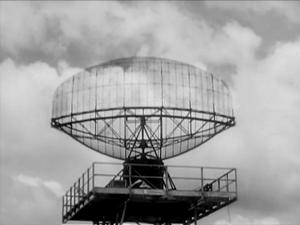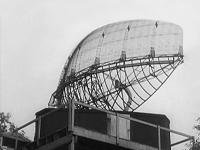AN/CPS-5
Description of the radar set, tactical-technical characteristics

Figure 1: AN/CPS-5



| Specifications | |
|---|---|
| frequency: | 1 300 MHz
( L-Band) |
| pulse repetition time (PRT): | |
| pulse repetition frequency (PRF): | 400 Hz |
| pulsewidth (τ): | 2 µs |
| receive time: | |
| dead time: | |
| peak power: | 750 kW |
| average power: | |
| instrumented range: | 210 NM (≙ 389 km) |
| range resolution: | 300 m |
| accuracy: | |
| beamwidth: | |
| hits per scan: | |
| antenna rotation: | 3.3, 5, 10 rpm |
| MTBCF: | |
| MTTR: | |
AN/CPS-5
AN/CPS-5 was a medium weight transportable search radar designed for early warning and for use in conjunction with a separate height finding set AN/TPS-10 for ground control of aircraft (GCI included) in the consolidation and fixed phase of an aircraft warning system.
Bell Telephone Laboratories and General Electric developed this search radar. General Electric began producing sets in January 1945. It could be operated with a crew of ten. Some of these units remained to serve in the first permanent network. Designed to provide a solid search of up to 60 miles at 40,000 feet, the radar often had success tracking aircraft as far as 210 miles away.
The radar used a modified parabolic reflector, (14 feet high, 25 feet wide) providing a cosecant-squared pattern achieved by displacing the reflector surface from the original parabolic shape. It was fed by a pyramidal horn.
Bildergalerie des AN/CPS-5
Source:
- David F. Winkler, Julie L. Webster: “Searching the Skies: the Legacy of the United States Cold War Defense Radar Program,” Headquarters Air Combat Command, June 1997, P. 74 (PDF)

